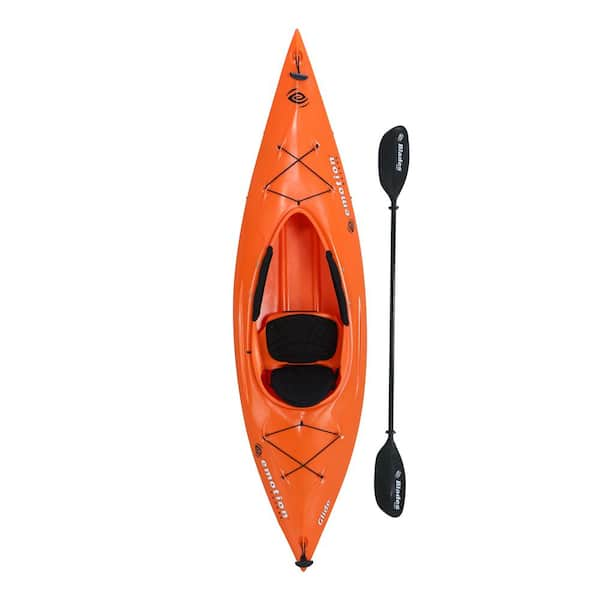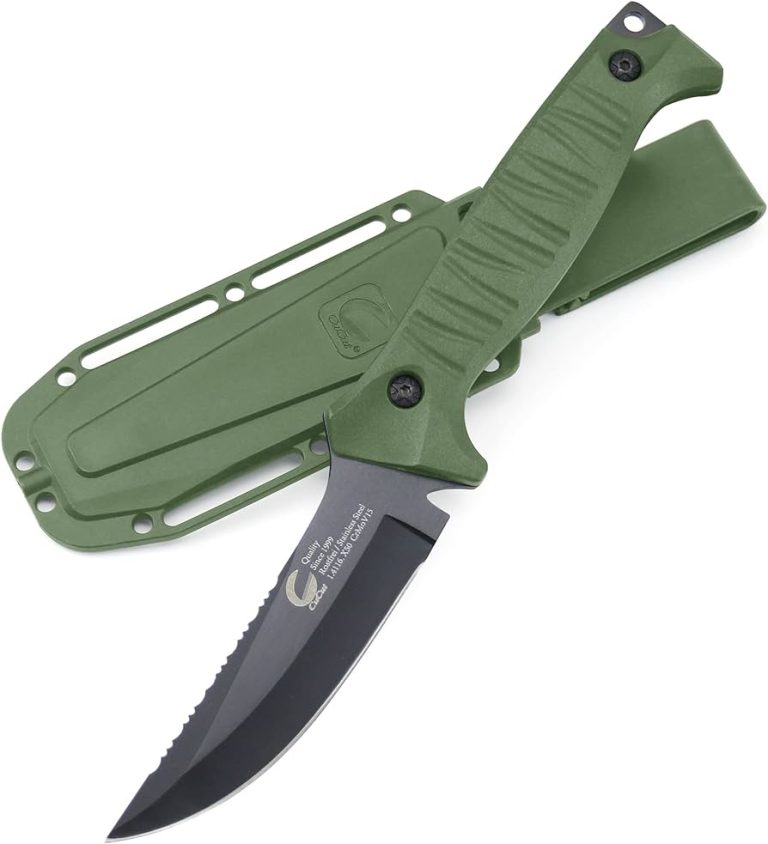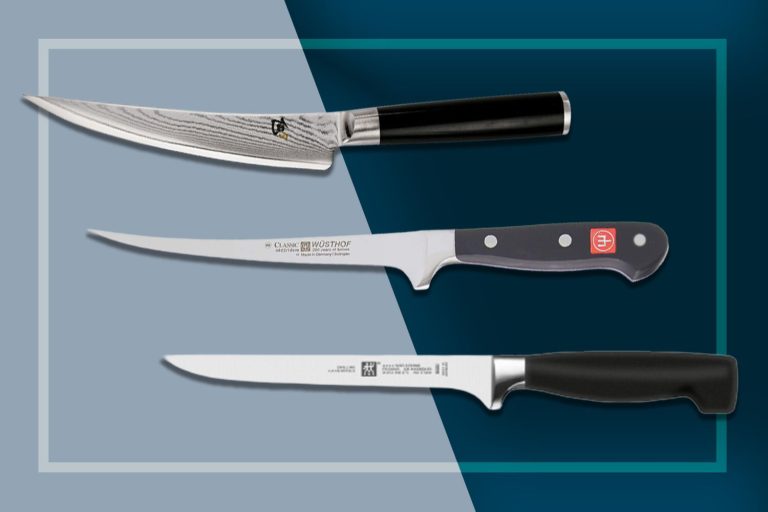Carving Knife Vs Chef Knife: Unveiling the Cutlery Powerhouses
A carving knife is primarily designed for slicing roast meats, while a chef knife is a versatile tool used for a wide range of kitchen tasks. When choosing between the two, consider what you’ll be using it for most often.
A carving knife has a long, thin blade that allows for clean, precise cuts, making it ideal for slicing thin slices of meat. On the other hand, a chef knife has a wider blade that is curved, allowing for efficient chopping, slicing, and dicing of fruits, vegetables, and herbs.
Whether you’re a professional chef or a home cook, having both knives in your kitchen arsenal can help you tackle any culinary challenge with ease.
Understanding The Role Of A Carving Knife
A carving knife and a chef knife are two essential tools in the kitchen, each serving a specific purpose. The carving knife has a long, thin blade that is designed to slice through meats with precision and ease. Its sharp edge allows for clean cuts, making it ideal for carving roasts, poultry, and other large cooked meats. The key features and characteristics of a carving knife include a narrow blade, a pointed tip, and a comfortable handle that provides a secure grip.
When it comes to versatility, a chef knife takes the lead. It is a multi-purpose tool that can handle a wide range of tasks, such as chopping, mincing, and slicing. The chef knife typically has a broader blade and a curved edge, allowing for efficient rocking motion during cutting. Its versatility makes it a go-to tool for professional chefs and home cooks alike.
In conclusion, while both the carving knife and chef knife are essential in the kitchen, their roles and features differ. The carving knife specializes in precision slicing of cooked meats, while the chef knife offers versatility for various cutting tasks. Depending on your cooking needs, understanding the purpose of each knife will help you make the most of your culinary experience.

Credit: dalstrong.com
Exploring The Versatility Of A Chef Knife
A chef knife is a versatile and essential tool in any kitchen. Its multi-purpose design allows for a wide range of tasks, making it a go-to option for both professional chefs and home cooks.
The key traits that set a chef knife apart are its sharpness, balance, and maneuverability. A sharp blade enables precision slicing, dicing, and chopping, while a well-balanced knife ensures stability and control during use. With its ergonomic handle and lightweight construction, a chef knife allows for easy maneuvering, reducing fatigue during prolonged use.
Whether you need to julienne vegetables, trim meat, or mince herbs, a chef knife can handle it all. Its versatility is further enhanced by its ability to tackle both delicate and tough ingredients with equal ease.
In summary, a chef knife stands out for its sharpness, balance, maneuverability, and versatility. Investing in a high-quality chef knife is an essential step towards creating culinary masterpieces in the kitchen.
Diving Into The Differences Between Carving Knife And Chef Knife
Diving into the Differences Between Carving Knife and Chef KnifeWhen comparing carving knives and chef knives, it's important to consider their unique features and functionalities. In terms of blade design and length, the carving knife is typically slender with a longer blade, ideal for precise slicing and carving tasks like roasts and poultry. On the other hand, the chef knife has a wider blade and is more multipurpose, suitable for various chopping, mincing, and dicing activities.
Another important aspect to consider is the blade edge intricacy and suitable cutting techniques. Carving knives often have a single, narrow edge with a pointed tip for creating clean, thin slices. Conversely, chef knives commonly feature a double-edged blade, enabling versatile cutting motions like rocking or chopping.
The primary functions and recommended usage scenarios further distinguish these two types of knives. Carving knives excel at delicately slicing through cooked meats and poultry. In contrast, chef knives prove their versatility in a broad range of kitchen tasks, including slicing, dicing, and even disjointing larger cuts of meat.
Ergonomics and handle variations are also worth noting. Carving knives tend to have a longer, narrower handle, allowing for precise control and grip during intricate carving processes. Chef knives typically offer a more substantial handle, providing a comfortable and secure hold for more demanding kitchen tasks.
Delving Into The Overlapping Functions Of Carving Knife And Chef Knife
Delving into the Overlapping Functions of Carving Knife and Chef Knife
The carving knife and chef knife are two essential tools in any kitchen, but their functions often overlap, leaving many wondering which one is more suitable. Both knives excel at performing a range of similar tasks that involve cutting, slicing, and dicing.
Similar tasks they can accomplish:
| Carving Knife | Chef Knife |
| Carving meats, such as roast beef or turkey, into thin, precise slices | Efficiently slicing and chopping vegetables, fruits, and herbs |
| Skillfully removing bones from meat or poultry | Mincing garlic or shallots with precision |
| Creating beautiful fruit and vegetable garnishments | Sectioning large fruits, like melons or pineapples, effortlessly |
Deciding which knife to use ultimately depends on the specifics of your task and personal preference. If you require precision slicing or intricate carving, the carving knife with its narrow, pointed blade is the better choice. On the other hand, the chef knife’s versatility makes it ideal for most everyday kitchen tasks, especially when speed and efficiency are key.
Showdown: Carving Knife And Chef Knife In Action
Showdown: Carving Knife and Chef Knife in Action
When it comes to comparing the performance and precision of a carving knife and a chef knife, their abilities in cutting through different types of proteins, handling various fruits and vegetables, and the ease of chopping, slicing, and dicing can make all the difference in the kitchen.
Cutting through different types of proteins
Using a carving knife, you can effortlessly carve thin, precise slices of meat, whether it’s a tender roast or a juicy turkey. On the other hand, a chef knife’s versatile blade allows you to handle a wider range of proteins, from whole chickens to tenderloins, making it a go-to tool for many chefs.
Handling various fruits and vegetables
With its long, slender blade, a carving knife is not designed for intricate fruit and vegetable work. In contrast, a chef knife’s wider blade and curved edge make it ideal for slicing, dicing, and mincing a wide variety of produce, offering versatility in the kitchen.
Comparing the ease of chopping, slicing, and dicing
While a carving knife excels in making smooth, clean cuts, a chef knife’s weight and balance provide better control and precision when performing chopping, slicing, and dicing tasks. It allows you to tackle anything from hard vegetables like potatoes to delicate herbs with ease.
Considering The Maintenance And Lifespan Of Carving Knife And Chef Knife
When it comes to considering the maintenance and lifespan of a carving knife versus a chef knife, proper care and storage techniques are essential for longevity. Both types of knives require regular sharpening and honing to maintain their sharpness and performance.
To ensure the longevity of a carving knife or chef knife, it is important to store them properly. Keep them in a knife block, on a magnetic strip, or in a protective sheath to prevent them from getting damaged or dull. Avoid storing them in a drawer or leaving them exposed to moisture, which can lead to rust or corrosion.
Sharpening and honing play a crucial role in maintaining the edge of the knives. Regular sharpening helps to remove dullness and restore the sharpness of the blades, while honing helps to align the edge and maintain its cutting efficiency. Consider using a sharpening stone or a honing steel for this purpose.
By following these care and maintenance techniques, you can prolong the lifespan of both carving and chef knives and ensure optimal performance in the kitchen.
Enhancing Your Cutlery Collection: Choosing The Perfect Knife
When selecting a carving knife, there are several important factors to consider. Firstly, **blade length** is crucial. A longer blade allows for cleaner and smoother cuts, especially when working with large roasts or turkeys. Additionally, **blade flexibility** is key, as it ensures better precision and control while carving. Another vital aspect to look for is a **comfortable handle**. Carving can be a time-consuming task, so having a handle that provides a secure and ergonomic grip is essential to prevent hand fatigue. **Blade material** also plays a significant role in the quality and longevity of the knife. High-carbon stainless steel is a popular choice due to its durability and resistance to staining.
When it comes to choosing a chef knife, **blade versatility** is a major consideration. Opting for a multi-purpose knife that can handle various tasks – from slicing to dicing and chopping – ensures efficiency in the kitchen. **Sharpness** is another critical aspect, as a sharp chef knife allows for effortless and precise cutting. The **balance** between the blade and handle is crucial to ensure proper control and reduce the strain on your wrist. Lastly, selecting a chef knife with a **comfortable handle** is essential for prolonged use, helping you maintain a secure grip.
Final Verdict: Which Knife Shines Brighter In Your Kitchen?
| Final Verdict: Which Knife Shines Brighter in Your Kitchen? | |
|---|---|
| Making an informed decision based on personal needs and preferences: | |
| Carving Knife | Chef Knife |
| The carving knife is ideal for precise slicing of cooked meats, such as roasts and poultry. Its long, narrow blade facilitates even, thin cuts. | The chef knife, on the other hand, is a versatile all-rounder, perfect for a wide range of kitchen tasks, including chopping, mincing, and slicing. |
| While the carving knife excels on meats, it may not perform as well when it comes to other foods, like fruits and vegetables. | The chef knife’s wider blade allows for better control and maneuverability, suiting it for a variety of ingredients. |
| So, if you frequently prepare roasts or turkey, a carving knife is a valuable addition to your kitchen arsenal. | However, if you desire a multi-purpose knife that can handle various culinary tasks effortlessly, a chef knife is the better choice. |
Conclusion
To sum up, both the carving knife and the chef knife serve unique purposes in the kitchen. Carving knives excel at slicing thin, precise cuts of meat, making them the ideal tool for activities like carving roasts or turkey. On the other hand, chef knives are versatile and can handle a wide range of tasks, from chopping vegetables to dicing fruits.
When choosing between the two, it boils down to the specific needs of your culinary endeavors. If you frequently prepare large cuts of meat and enjoy hosting family gatherings, a carving knife is a valuable addition to your kitchen arsenal.
However, if you prefer an all-in-one tool that can handle various chopping, slicing, and dicing tasks, a chef knife is the way to go. Ultimately, with the right tool at your disposal, you can enhance your cooking experience and create delicious meals with ease.






